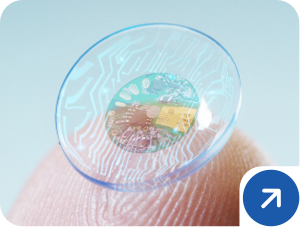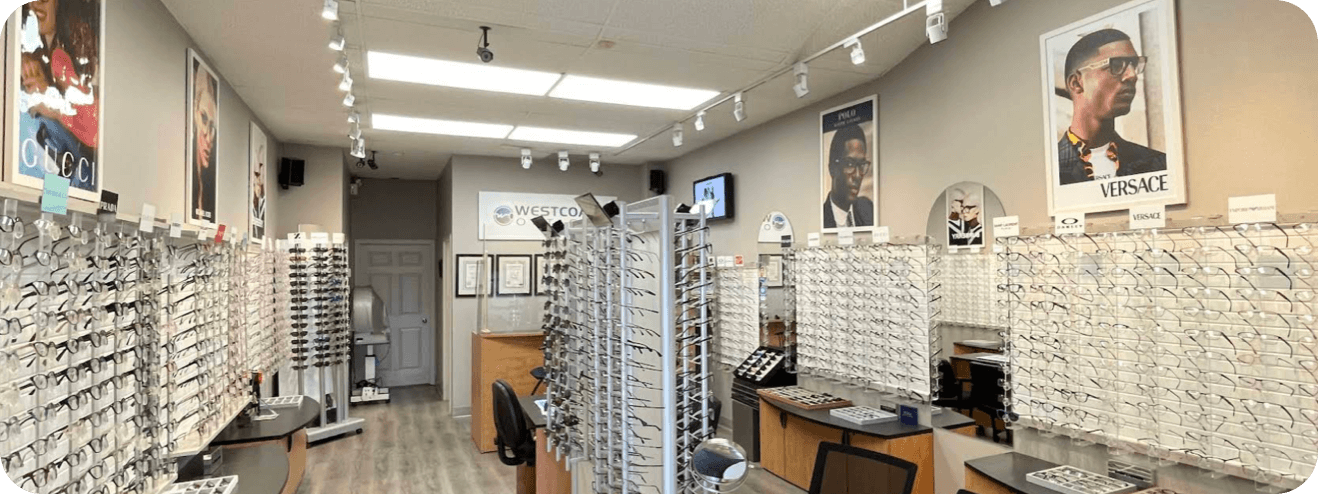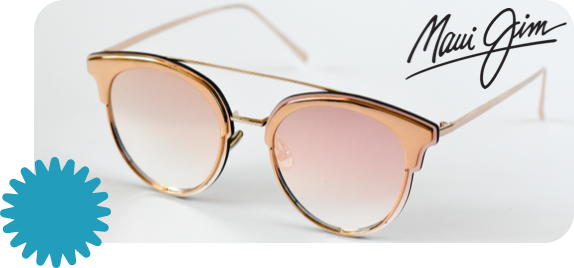If you need a new pair of glasses, there are many to choose from; your optometrist can help you find the best pair. If you’re experiencing blurry vision as you get older, they may recommend progressive lenses.
Many adults choose progressives for their convenience and look, but what are these lenses? Continue reading to learn more about progressive lenses, including what they are and their associated benefits and drawbacks.
What Are Progressive Lenses?
Progressive lenses differ from regular eyeglasses because they contain multiple prescriptions in a single lens. Also known as multifocal lenses, these glasses allow you to see clearly from different distances.
A pair of progressives allow you to see clearly during close-up work (reading a book), middle-distance work (using the computer), or distance viewing (driving a car). Progressive lenses are ideal for adults diagnosed with presbyopia.
What is Presbyopia?
Presbyopia develops with age and causes close-up objects to appear blurry. It’s often confused with hyperopia (farsightedness), but presbyopia occurs when the natural lens in your eye becomes less flexible.
This condition is treatable with prescription lenses. Many people purchase reading glasses to switch between their regular prescription, but multifocal options exist, like progressive lenses or bifocal and trifocals.
Are They Similar to Bifocals & Trifocals?
Progressive lenses are similar to bifocals and trifocals. These lenses provide multiple prescriptions in a single pair of glasses, but progressives lack the separating lines present on bifocals and trifocals.
Progressive lenses have a seamless transition between prescriptions, one of their many benefits. They remove the sudden “jump” you can experience when switching between prescriptions in bifocals and trifocals. If you’re interested in progressive lenses, it’s important to understand all of their pros and cons before making any final decisions.
The Pros & Cons of Progressive Lenses
There are several benefits and drawbacks related to progressive lenses. Understanding these different factors can help you decide if these lenses are right for your needs.
Pros
Some of the pros of progressive lenses include:
- Only needing one pair of eyeglasses
- No bifocal lines appear on the lens
- A seamless, modern look
Progressive lenses are versatile; they can help correct refractive errors such as myopia, hyperopia, and astigmatism. You can easily switch between whatever prescription you may need depending on the task at hand. There’s no need for a second pair of glasses.
Cons
Some of the cons of progressive lenses include:
- Difficulty seeing through the lens
- Temporary vision distortions
- Cost
Bifocals and trifocals have visible lines separating your prescriptions, but progressive lenses don’t have any. Without these lines, there can be a learning curve with progressives. It may take a few weeks to feel comfortable wearing them.
Different sections of your lens are for different viewing distances, and shifting between them may cause visual distortion. You may stumble when glancing downward, or your eyes may have peripheral distortion when looking from side to side.
Because progressives are essentially 3 eyeglasses in one, they’re typically more costly than other lenses. If you’re wondering if progressive lenses are worth the cost, speak with your optometrist about any questions or concerns. They can recommend the best progressives for your unique needs.

Types of Progressive Lenses
There are several types of progressive lenses available today, designed for different purposes. There can be a big difference between lens types; some are ideal for computer work while others are for outdoor activities.
The different types of progressive lenses include:
- Standard progressive lenses: These offer a wide reading area but require enough vertical height to provide a smooth transition between prescriptions.
- Short corridor progressive lenses: These lenses fit into smaller frames, sacrificing practicality for a more fashionable look. Because of their smaller size, short corridor lenses may be difficult to wear at first.
- Computer progressive lenses: These lenses are ideal for office use, providing clear vision between 16 inches to 16 feet. Computer progressives can help reduce symptoms of digital eye strain when using digital devices.
- Premium progressive lenses: These lenses are more expensive but personalized for your eyes. They offer a distortion-free reading area.
- Ground-view progressive lenses: These lenses are suitable if you enjoy the outdoors. Ground-view progressives reduce lens distortion and offer a more “natural” vision.
No matter the type of progressive lenses you choose, they can have a difficult adjustment period. Your optometrist will recommend some ways you can become more comfortable with your new lenses.
Tips for Wearing Progressive Lenses
If you’re new to progressive lenses, there are a few ways you can make sure your glasses suit you:
Have Your Lenses Fit By Your Optometry Team
Your optometry team will help you choose the correct lenses and frame. It’s important your lenses center over your eye properly; poorly fitted glasses can make adapting to your lenses difficult.
Give Yourself Time to Adjust
Progressive lenses may take a few weeks to feel comfortable. Give yourself at least 2 weeks to adjust to your new glasses. If your lenses still feel uncomfortable, contact your optometrist.
Break Your New Glasses In
It may feel tempting to wear your old glasses but stick with your new lenses as much as possible. Only wearing your progressive lenses will help you adjust quicker.
Progressive lenses can be beneficial if you require multiple prescriptions but speak with your optometrist before making any final decisions. They can help determine the best eyewear for your needs. If you’re interested in progressive lenses, contact your optometrist.















